
Scroll down to read
Written by
Carmen
Chan
2019
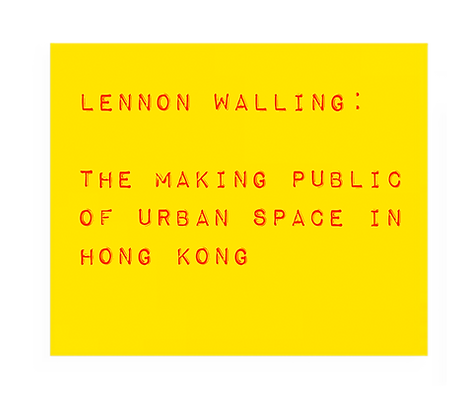
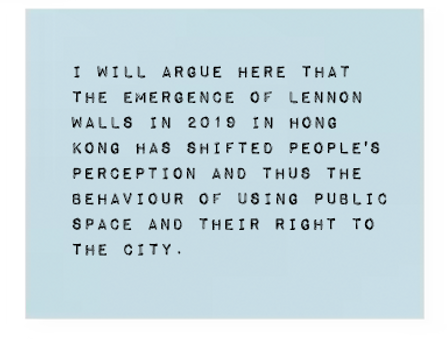






Lennon Wall was first found in Prague in 1988, as a creative expression of irritation for the local communist regime, which is a symbol of common ideal values such as freedom, love, and peace.

The first Lennon Wall in Hong Kong was found at Central Government Complex, Admiralty during the Umbrella Movement in 2014.

Protesters covered the wall with their demands and supportive words written on Post-It notes, the colourful scenery has become one of the most iconic representations of the movement and its values—freedom and democracy.


The 2019 version of Lennon Wall has evolved into a bigger scale in terms of locations and diversity of works—they can be found on/in the public footbridges and subways (i.e public areas) in every district of Hong Kong; and there are not merely Post-It notes, but all manners of creative works.





Modern public space is generally understood as an open space for social interaction and entertainment such as parks and shopping malls, which are often governed by laws.

Any forms of political activities such as protests are prohibited in most of the shopping malls in Hong Kong; parks are under surveillance, further applications and verification by the government are required to use the spaces—all for the sake of safeness and profit-making.
As Zieleniec referred to Lefebvre's politics of space (2018) in his essay, these urban spaces have been "rationalised, functionalised and above all ideologically planned and designed", the public spaces we have been encountered in daily life are produced by the powered authorities in a city.
As Zieleniec referred to Lefebvre's politics of space (2018) in his essay, these urban spaces have been "rationalised, functionalised and above all ideologically planned and designed", the public spaces we have been encountered in daily life are produced by the powered authorities in a city.

Henri Lefebvre




The subways and footbridges where the 2019 Lennon Walls located are also not used to express ideas previously, they were used as "planned and designed" and "rationalised"—people would only walk over without giving extra attention.




As Zieleniec referred to numerous of urban theorists (2018) in his essay, city life is about divergence and possibilities, Wirth (1938) also described urban life as a sense of "toleration of differences"
As argued by Lefebvre indicated in Mitchell's book (2003), a city is a work that all its habitats should contribute to.
The success in a high level of divergence tolerance in a city represents how developed a city is.
Public space should act as a crucial role in embracing diversity in a modern city and hence reclaiming different people's right to the city, due to its nature of political inclusiveness
The absence or deformity of public space has showcased a shrinkage of modernity in an urban city.


The major contradiction of ideal public space and the modern public space is the level of intervention of the dominant authorities in a city, in which its habitants has limited freedom in deciding how to use and who can use the space.

Mitchell (2003) emphasised that there should be political representations of assorted communities instead of only a single dominant power in making of public space; representations are produced by actions such as public debates and discussions to raise voices.


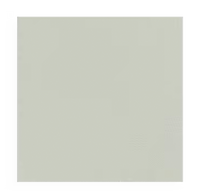
Yee Kuk Street in Sham Shui Po is often occupied by the second-hand electronic dealers

Foreign domestic helpers having assemblies in parks.


People drying their laundry in public basketball courts and on iron fences.
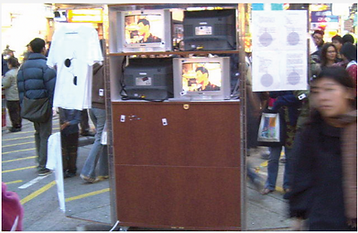

The Autonomous 8a held their first public screenings in Sai Yeung Choi Street, Mong Kok in 2003, which was aimed to create an open and objective broadcasting channel for the minorities to voice out.

In the 2014 Occupy Central movement, protestors occupied the road with domestic goods and continued their daily life there, they spontaneously divided the site into different areas for providing different services for each other: food, phone charging, free class tutorials, public forums and classrooms. There was also an area for creative expressions such as installations, paintings, Lennon Walls, which soon became an iconic representation of the movement. Protesters had complete control of the space without the authorities intervene.



Representations of political minorities were made and actions were taken—a successful production of public space.


As noted above, the wall filled with colourful Post-It notes has always been a representation of demand for freedom and democracy since 2014, this way of stacking colourful square-shaped notes together has inspired people to create bigger graphics and words in 2019.




Pepe the Frog, LINKG pig and dog are the most commonly found cartoon characters on walls with other significant elements of the movement


Ironically, Pepe the Frog is a symbol of hate and "a cheerleader of racism and anti-Semitism, a friend of alt-right extremists" (Victor, 2019) in America. However, a 33-year-old protestor Mari Law explained in his interview with The New York Times (2019) that Hongkongers can redefine the meaning of Pepe in this movement, which is now the symbol of democracy and freedom.

The idea of "redefining" of an imaginary is a production of representations as new values and meanings are intentionally given to an existing graphic.

The nature of posters is already "public" as they are meant to be seen by people which, according to Sontag, can mobilise people’s ideologies (1970)


Political posters designed by individual and unknown artists online have also occupied a large area of Lennon Walls.

Protesters are trying to persuade more people to support them by sticking the posters in everywhere.

These ideas and ideologies are now demanded to be seen and heard as they were put on walls, such a making of representation and the action of seeking for attention have made the space of subway and footbridges "public".

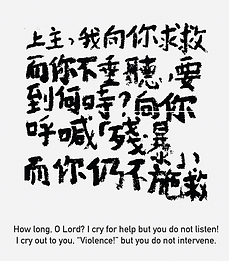

Mr Cheung, a Kai-Fong (i.e neighbourhood) lives near the Tai On Street Bridge, writes Chinese calligraphy to express his opinion; there are also bible quotes and words written in other languages on the walls.

The diversity in the forms of creative expressions has allowed individuality and creativity to boom, people with different backgrounds are welcomed to use their preferred ways to express without being compressed.
Such inclusiveness has constructed a more comprehensive picture of the dissatisfaction of the general public towards the government. These works are meant to be seen by the public, so not only the common values but each of the individual experience and beliefs are expressed and represented through the works.




Due to serval violence happened at different sites, people have started to form groups on social media before they go out. Each people are given a duty respectively: cleaning the wall, putting glues, scouting…

In response to the “Self-Help-Mentality” (Chen & Szeto, 2014), protestors nowadays not only form communities at one site but in different places to make representations and promote their ideologies.
The construction of Lennon Wall has provided a brand new experience of exercising these urban spaces for its habitats—including the opposite voice.

Some even make actual comments on the walls, but most of them will prefer to rip down the posters—these are their ways (i.e actions) of making voices to the public to show their objection and dissatisfaction.
The interaction between the two camps at the sites of Lennon Wall has showcased a discourse of different political voices in a space without the intervention of other organizations and authorities, in which both of them has attained representations and taken actions—it is a rise of public space.


It is observed that at some sites of Lennon Walls, the pro-government and pro-police groups will show responses by overlapping the works with words or drawing a big cross on top.

Tai On Street Bridge had once been abandoned previously after the construction of the crossroad nearby. However, after the boom of Lennon Wall, the bridge turns into a place for Kai-Fong to discuss, debate and share their stories—Mr Cheung, the Chinese calligraphy writer, shared to me his daily routine of talking to different people passing by the bridge, he claimed himself the “protector” of this Lennon Wall, providing a different perspective in contributing to the wall


Storytelling can "mobilize individuals" in movements, the exchange of stories and discussions of people have produced various of narratives and thus a political gesture to make representations.

Therefore, the formation of representations is not only limited to the demonstration of creative works nor during the construction of Lennon Wall, but also the inspired actions afterwards.




The representations of various political views and individual beliefs at the site of the walls have helped to attain the rights to decide what to do with these urban spaces of different city habitats, which also showcased the impulse of people striving for political spaces nowadays (Wong, 2019), as well as stimulating the flow of ideas and public debates.

The level of privateness in these spaces has been lowered without other powers getting involved and only the actual users—subways and tunnels have truly become the space for the public, and thus the divergence of a modern city can be embraced.
